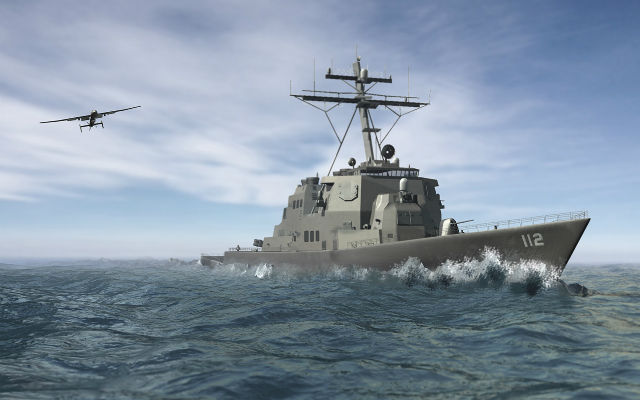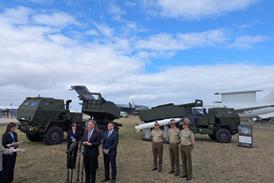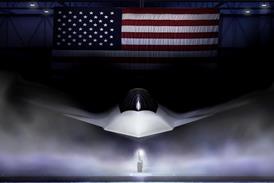The US Defense Advanced Research Projects Agency (DARPA) is one step closer to demonstrating the launch and recovery of a medium-sized unmanned air vehicle (UAV) from a small vessel, following a $19 million preliminary design contract award to AeroVironment.
Under phase II of DARPA’s tactically exploited reconnaissance node (Tern) programme, the company will conduct “subscale flight demonstrations” over the next 12 months that will subsequently lead on to a sole-source phase III at-sea demonstration contract award.
DARPA launched the TERN effort in 2013, but joined with the US Navy’s Office of Naval Research (ONR) in May 2014 to continue the programme, which was retitled “Tern”.
The agency considers assets that provide worldwide airborne intelligence, surveillance and reconnaissance (ISR) as having weaknesses – specifically helicopters being limited by range and flight time, and manned and unmanned fixed-wing aircraft being restricted by large base and runway requirements.
“Tern envisions using smaller ships as mobile launch and recovery sites for medium-altitude long-endurance [MALE] unmanned aircraft,” DARPA says. “Ideally, Tern would enable on-demand, ship-based unmanned aircraft system operations without extensive, time-consuming and irreversible ship modifications.”

DARPA
Ships would have a “mission truck” to transport ISR and strike payloads, and would support field-interchangeable mission packages for overland and at-sea missions from multiple ship types.
According to a broad agency announcement (BAA) released by DARPA in March 2013, TERN was to match emerging land-based MALE UAV capabilities – the ability to carry out persistent ISR and strike missions – with payloads of 272kg (600lb) and at a range of 900nm (1,670km) from the host ship.
The BAA also claimed TERN’s objective would be for UAVs to operate from multiple ship types. This would be from ships such as the USN’s Littoral Combat Ship 2-class. However, following the ONR teaming announcement, the target host vessel was changed to Arleigh Burke-class destroyers.
The first two phases of the programme focus on preliminary design and risk reduction for the Tern system, DARPA says.
Five teams were under contract for phase I, and one or more of these was expected to be selected to continue in phase II, although it is unclear whether any firms in addition to AeroVironment have also been selected.
In phase III, one contractor is expected to be selected to build a full-scale demonstrator Tern system for ground-based testing, culminating in an at-sea demonstration of launch and recovery. The 2013 BAA cited 2017 as the target date for the at-sea demonstration.
Source: FlightGlobal.com


























